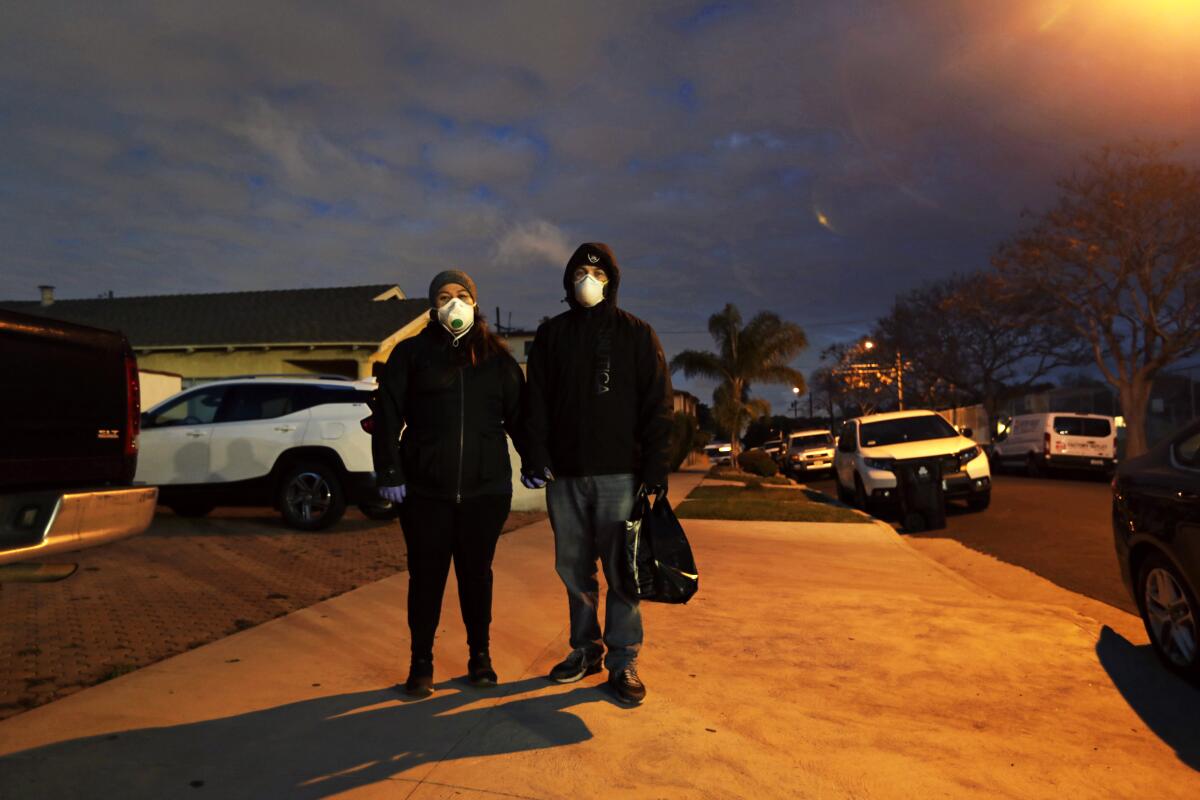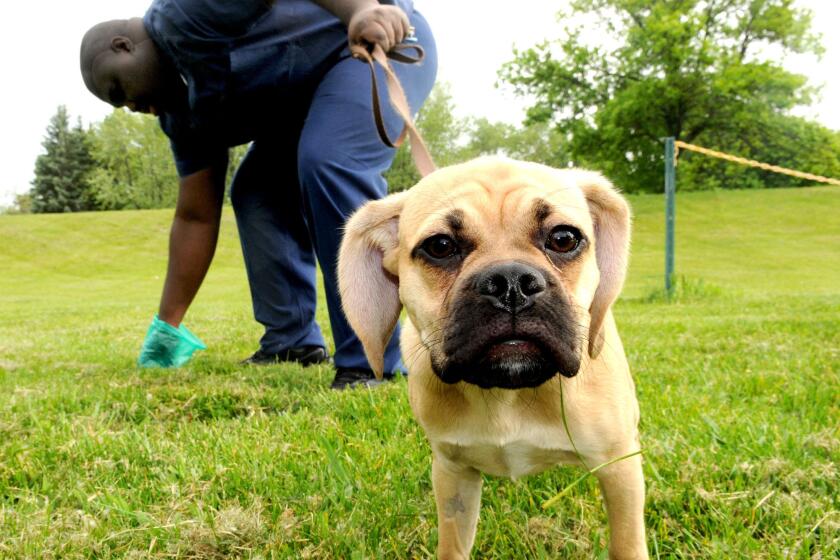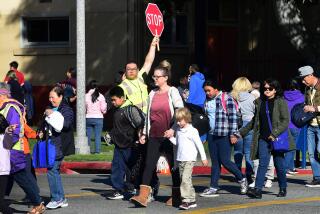Crowded sidewalks are vectors for coronavirus infection. Take streets back from cars and let people use them

- Share via
My 15 years of living and walking in Los Angeles have taught me at least one important lesson: Stop signs here are more of a suggestion than a rule.
Since the coronavirus outbreak began, that lesson has gone from being a useful insight to an indispensable pro tip for survival. From what I’m seeing, the L.A. rolling stop has been replaced by blowing through intersections like your house is on fire.
With stay-at-home orders miraculously clearing our streets of their usual traffic, drivers are evidently feeling liberated. Too liberated. And not just in L.A.
That people are choosing this moment to live out their inner Mario Kart fantasies couldn’t come at a worse time.
In this era of self-isolation, walking, jogging and bicycling around our neighborhoods has become the primary outlet for most of us to get out of the house, get supplies and stay sane. As a consequence, however, city populations are cramming onto narrow sidewalks at a time we’re supposed to be staying six feet apart — turning what should be a healthy outdoor indulgence into vectors of contagion.
Going for a walk is one of the few outdoor activities we’re still allowed to do under California’s coronavirus lockdown. Stop ruining it.
I, for one, haven’t taken a walk in my neighborhood without a jogger sneaking up behind me — oblivious to the rules of social distancing — and passing with less than six feet of space between us, breathing heavily. A recent piece in the Guardian termed this coronavirus-fueled conflict between walkers and joggers “the battle for our pathways.”
So what’s the answer? Do we all just stay indoors for months until the coronavirus crisis relents?
At least for now, a better question is this: Why do speeding drivers still have free rein over our streets while joggers and pedestrians are likely contaminating one another while they battle for scraps on the margins?
Every city in the world has thousands of miles of public space that is being grossly underused in this crisis: our streets. We should be taking lanes from cars and giving them to people.
If you aren’t an essential worker, and you aren’t ill, the only place you should be driving is the grocery store. And those trips should be as infrequent as possible. Given this reality, there is zero reason to reserve the totality of our urban road networks exclusively for vehicles. Yes, we need clear roadways for first responders. But a vast system of paved streets designed to keep tens of thousands of vehicles flowing no longer needs to remain unimpeded when traffic has dwindled to a trickle.
What we need most right now are spaces for people to catch some newly fresh air — or pick up supplies if they don’t have a car — without contracting COVID-19.
Some cities are already taking action on this front. New York has taken away lanes of traffic to install temporary bike paths. Calgary, Canada, is experimenting with shutting down some streets to car traffic entirely and opening them up to pedestrians.
Others, including Los Angeles, should find ways to follow suit.
Of course, the last thing anyone wants to do right now is incentivize people to leave their homes any more than necessary. Public spaces are being shuttered. Parks, playgrounds and beaches across the country are rightly being closed. But dogs need to be walked. Supplies purchased. And as spring turns into summer and the weather warms, people aren’t going to stay indoors (that is, unless police or the National Guard force them to). So long as we maintain the freedom to walk, jog and bike for exercise, cities should be making those trips as safe as possible. To do that means taking streets back from cars and giving them to people.
No one should be crowding on sidewalks — and risking the coronavirus — for fear of getting plowed into by a speeding SUV.
More to Read
A cure for the common opinion
Get thought-provoking perspectives with our weekly newsletter.
You may occasionally receive promotional content from the Los Angeles Times.











